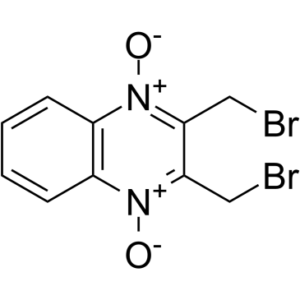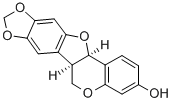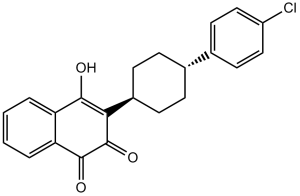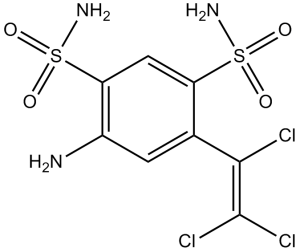Antimalarial agent 1 is a novel and potent antimalarial drug.
Tafenoquine (formerly known as SB252263-AAB; WR-238605; WR238605; Brand name Krintafel) is an 8-aminoquinoline analog and oral drug developed by GlaxoSmithKline that has been investigated and approved in 2018 as a potential treatment for malaria, as well as for malaria prevention. In July 2018, United States Food and Drug Administration (US FDA) approved single dose tafenoquine […]
Benznidazole (Ro-07-1051; NSC-299972; Radanil) is an FDA approved and orally bioavailable antiparasitic drug used in the treatment of Chagas disease.
Cambendazole is one of the most effective agents for the therapy of human strongyloidiasis.
Conoidin A is a cell permeable inhibitor of TgPrxII (IC50 =23 µM).
AWZ1066S is a novel, potent and highly specific anti-Wolbachia drug candidate for a short-course treatment of filariasis, with an EC50 of 2.5 nM in cell assay.
Isolated from Maackia amurensis Rupr.et Maxim, Maackiain is a novel and potent larvicidal agent against Aedes aegypti mosquito.xp Parasitol (LD50 = 21.95 µg/mL).
Atovaquone (also called atavaquone) is a hydroxynaphthoquinone based antiprotozoal and antimicrobial medication used to treat or prevent for pneumocystis pneumonia, toxoplasmosis, malaria, and babesia. Atovaquone is a chemical compound that belongs to the class of naphthalenes. Atovaquone is a hydroxy-1,4-naphthoquinone, an analog of ubiquinone, with antipneumocystic activity. Atovaquone is an anti-protozoal mitochondrial electron transport inhibitor; […]
SQ109 (NSC-722041) is an antituberculosis drug which is currently in advanced clinical trials for the treatment of drug-susceptible and drug-resistant tuberculosis, it is a novel, potent and selective inhibitor of the trypomastigote form of the parasite with IC50 for cell killing of 50±8 nM.
Clorsulon (also known as L631529; MK401) is an antihelminthic agent that is used in the treatment of Fasciola hepatica infections in calves and sheep. Clorsulon acts as a competitive inhibitor of both 3-phosphoglycorate and ATP and had a Ki of 0.29 mM, inhibits glucose utilization and acetate and propionate formation by mature Fasciola hepatica in […]









